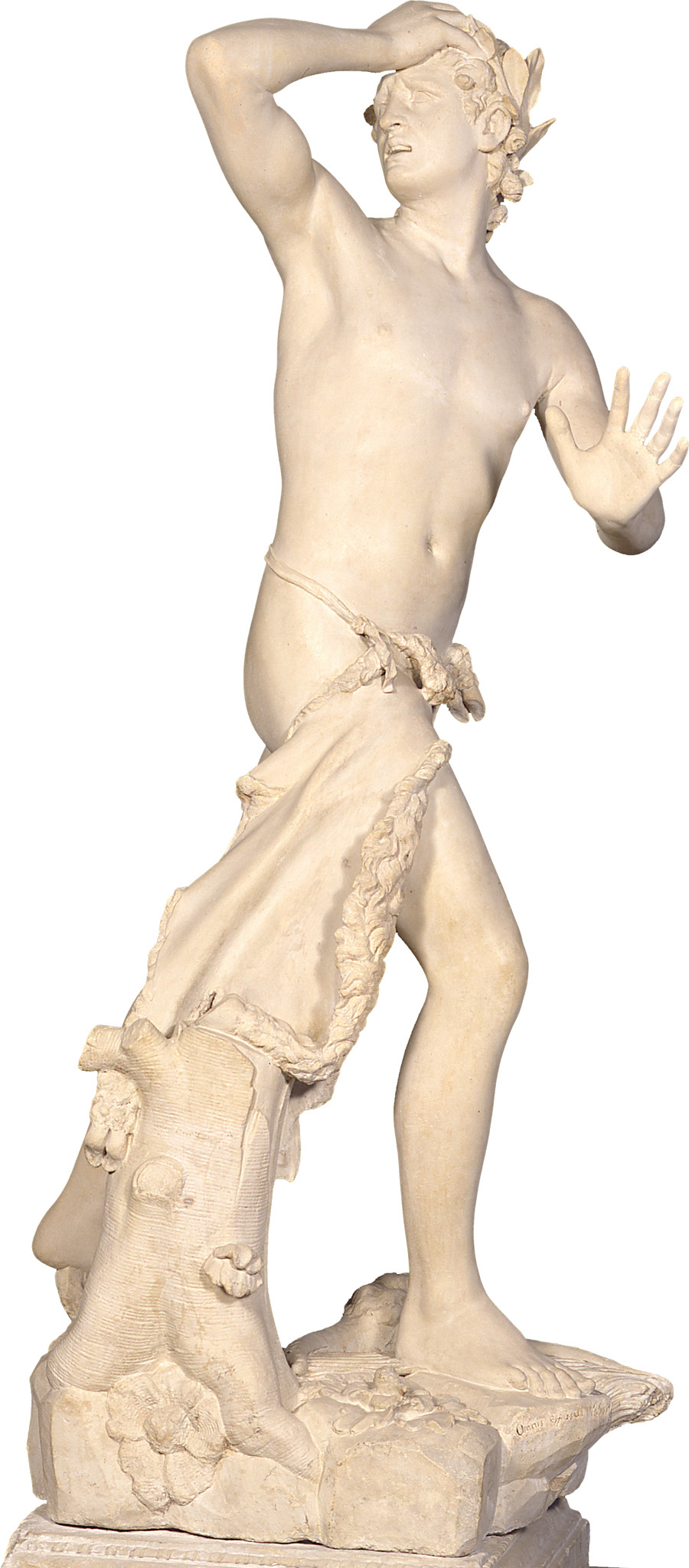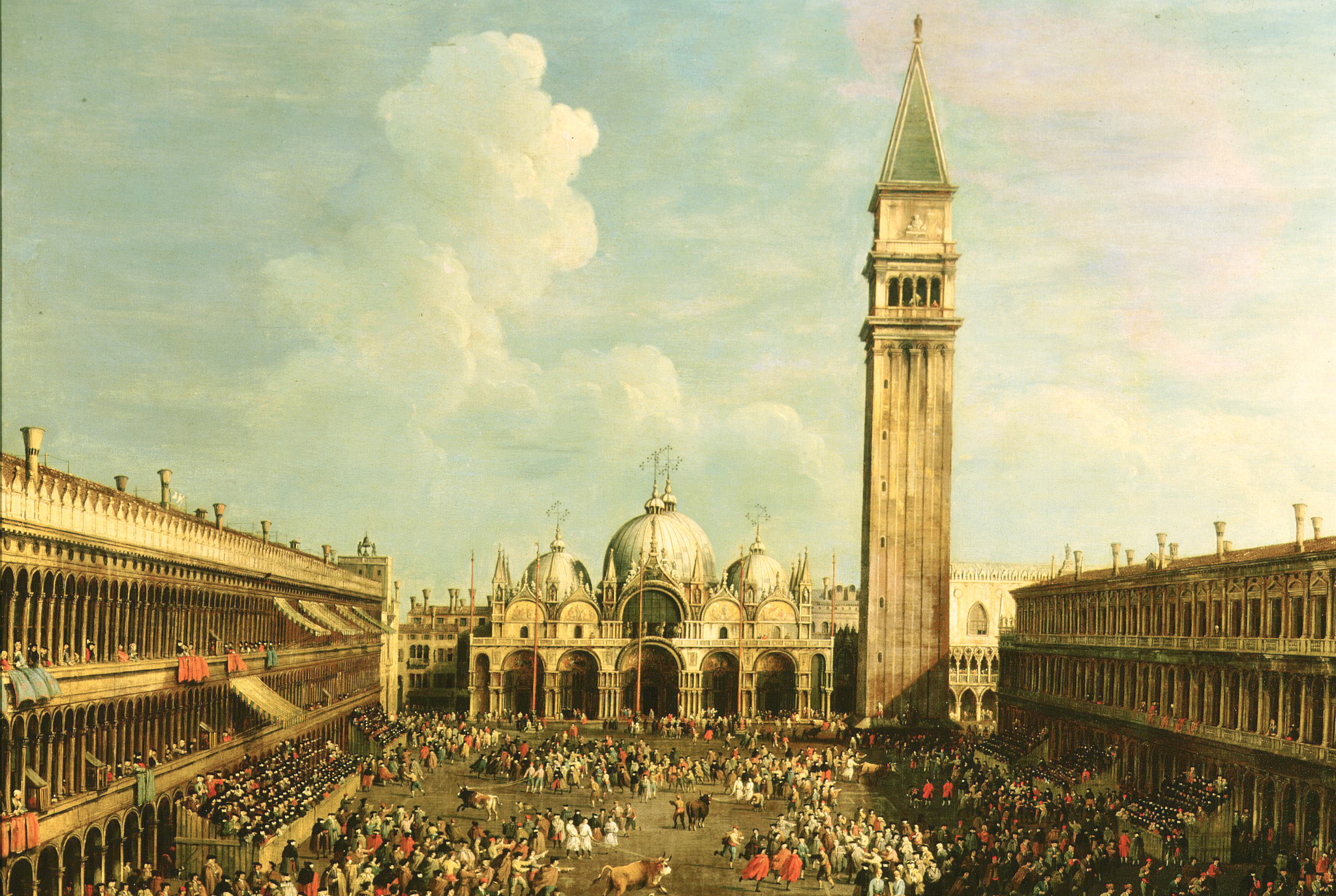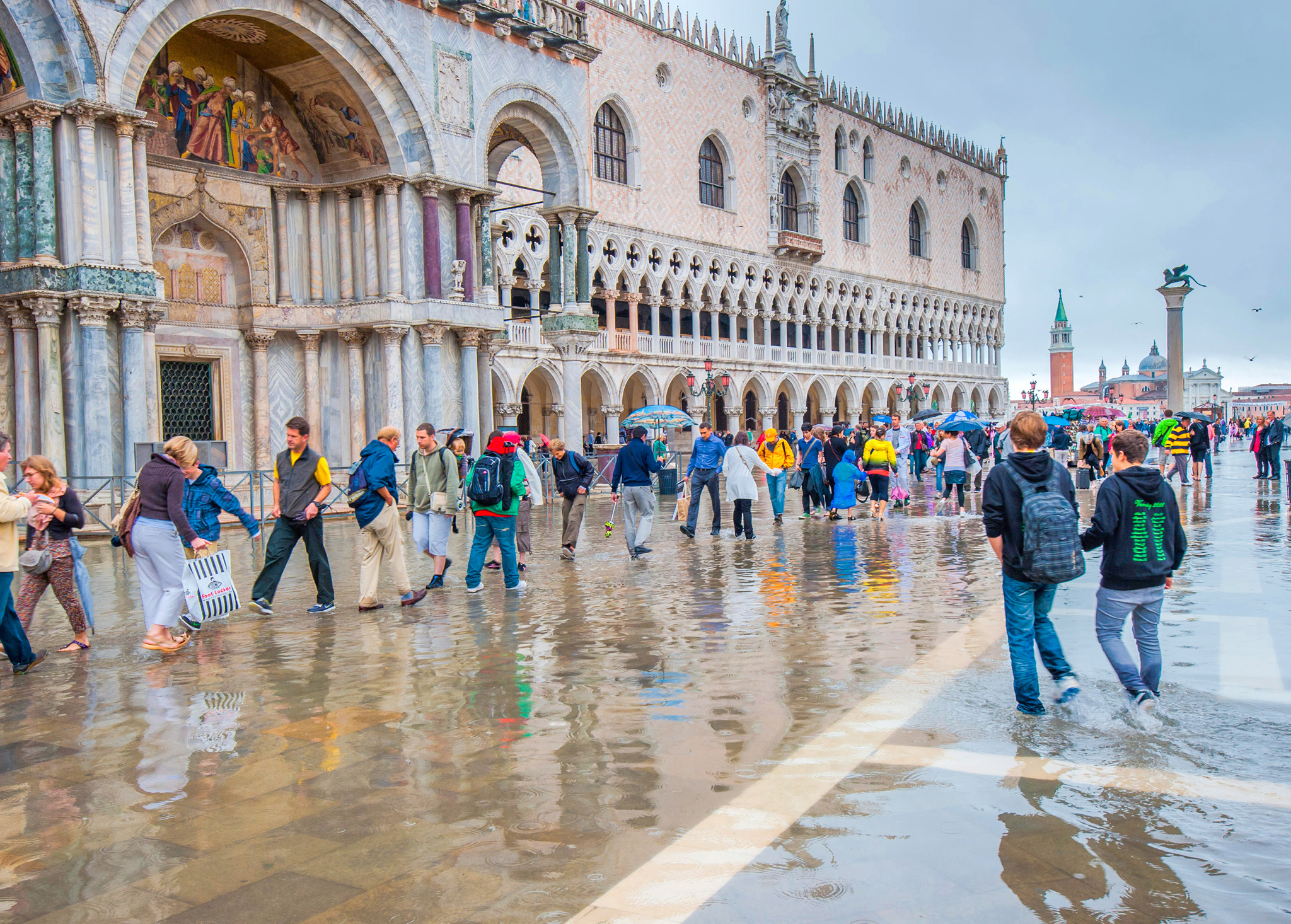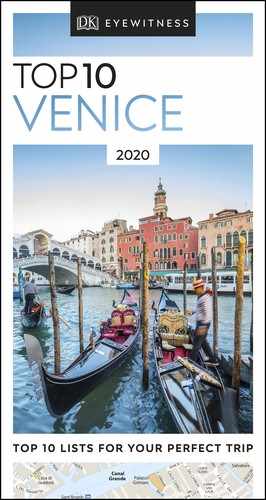MUSEO CORRER COMPLEX
1. Biblioteca Marciana Ceiling
The ceiling vault of the opulent reading room (sale monumentali), inside the Libreria Sansoviniana, collapsed in 1545 and architect Sansovino imprisoned – he was released to complete the job at his own expense. Titian selected artists for the decorations; Veronese was awarded a gold chain for the best work.
2. Libreria Sansoviniana Staircase
Bedecked with gilt and stucco decorations by Alessandro Vittoria, the 16th-century staircase leads from a monumental entrance on the piazza to the halls of the old library.
3. Veneziano Paintings
This prolific Byzantine artist is featured in the Pinacoteca’s Room 25 (part of Museo Correr), with glowing two-dimensional religious portraits (1290–1302).
4. Correr Ballroom
This showy Neo-Classical creation was built for Napoleon. It is now used for exhibitions.

Neo-Classical interior of the ballroom
5. Two Venetian Ladies
Carpaccio’s masterpiece of well-dressed ladies (1500–10) is in Room 38 of the Museo Correr. It was first thought to depict courtesans because of the ladies’ décolléte dresses, but the women are, in fact, awaiting their menfolk’s return from hunting.
6. Canova Statues
In the Museo Correr, works by Antonio Canova (1767–1822), foremost sculptor of his time, include his acclaimed statues of Orpheus and Eurydice.

Canova’s statue of Orpheus
7. Map of Venice
Pride of place in Room 32 of the Museo Correr goes to Jacopo de’ Barbari’s prospective map-layout of Venice (1497–1500), which was painstakingly engraved on six pear-wood panels.
8. Bellini Room
Works by the talented Bellini family are on display in Room 36 of the Pinacoteca: the poignant Dead Christ Supported by Two Angels (1453–5) by the best known, Giovanni; head of the family Jacopo’s Crucifixion (1450); and son Gentile’s portrait of Doge Giovanni Mocenigo (1475).
9. Narwhal Tusk
Once prized as the horn of the fabled unicorn, this 1.6-m- (5-ft-) long tusk from the rare whale has been superbly carved with Jesse’s and Jesus’s family tree (Room 40 in Museo Correr).
10. Crafts and Guilds
Wooden sandals 60-cm (24-inches) high, inlaid with mother-of-pearl, illustrate the stiff demands put upon followers of 15th–17th-century fashion (Room 48).
ACQUA ALTA FLOODING
Acqua Alta (“high water”) has long been disruptive to the city between October and March. As warning sirens fill the air, people drag out their waterproof boots, shopkeepers rush to put up protective barriers and street-sweepers lay out duck-boards in low-lying spots. Venice and its lagoon are subject to the tides of the Adriatic Sea but flood levels are caused by the coincidence of low atmospheric pressure, strong sirocco winds from the south and natural high tides due to moon phases. Piazza San Marco is among the most vulnerable spots. The flood gates designed for the Lido sea entrances are held by many experts to be both useless and harmful to the lagoon. However, there are plans for an elaborate drainage system on the piazza, dredging canals and raising paving levels.

Bullfight in St Mark’s Square by Canaletto and Giovanni Battista Cimaroli
TOP 10 HISTORIC EVENTS IN PIAZZA SAN MARCO

Piazza San Marco is located in a vulnerable position on the edge of the lagoon and has been flooded by high tides throughout its history.
1 Foundations of Doge’s Palace laid (AD 814)
2 Construction of basilica started (828)
3 First bullfight held (1162)
4 Square paved with brick, herringbone-style (1267)
5 Square paved with volcanic trachyte blocks (1722–35)
6 Napoleon demolishes San Geminiano church to make way for Ala Napoleonica (1810)
7 Campanile crumbles to the ground (1902)
8 Record flood 1.94 m (6.4 ft) above sea level (4 November 1966)
9 Pink Floyd rock concert attracts 100,000 (1989)
10 Campanile stormed by Venetian separatists (1997)
